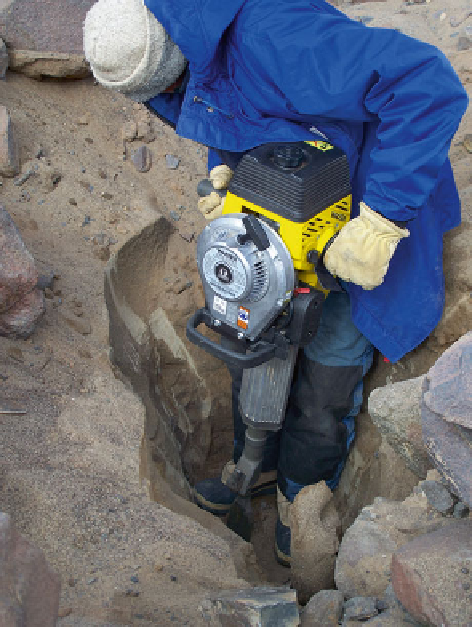Geoscience Reference
In-Depth Information
Fig. 3.5
Portable gasoline-
powered hammer used to
excavate frozen soil in
Beacon Valley, Antarctica
(Photo by M. Kurz)
Horizon sampling generally is employed for pedological studies; however, for
specialized studies depth-sampling is used. For example, soil organic C budgets are
often calculated for the 0-30 cm, 30-100 cm, and 100-300 cm depths (Hugelius
et al.
2013
). Frozen cores may be cut with a chop-saw into horizons or depth
increments.
When sampling unfrozen cryosols, three kinds of samples are collected: bulk
samples for routine analysis, minimally disturbed volumetric samples for bulk
density and water retention measurement, and thin-section samples using special
collection boxes for micromorphological analysis. Frozen cores require special
handling. After they have been cut into horizons or sections, they should be placed
in suitable containers that eventually will be allowed to thaw at room temperature.
Once the samples have thawed, the excess water should be decanted and the volume
noted for determining the excess water content. The samples are weighed and
placed in a drying oven. The moisture content from this weighing represents that
due to pores. We dry soil samples at 65 °C because drying at higher temperatures
may cause combustion of organic matter. After a suitable time period, the samples
are taken out of the oven and weighed; the pore-water content can then be calcu-
lated. The oven-dry bulk density can also be calculated. Removing and weighing
coarse fragments may be important for some studies.

